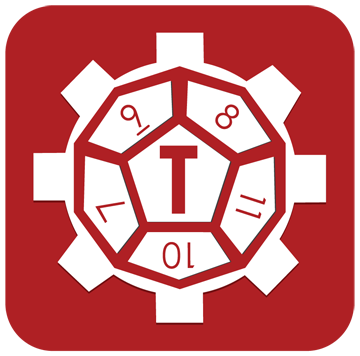Dime Adventures: Big Damn Heroes
Posted by
Thorin Tabor
on Sept. 26, 2016, 12:13 p.m.
Last week I posted the first in a series of game design articles about our upcoming pulp alternate history RPG, Dime Adventures. This week I’m going to continue discussing the game design by taking a look at my design of the character creation process.
If you read last week’s article, you’ll know that I defined four design goals for the sort of pulp heros our game supports:
- Pulp heroes are broadly competent.
- Pulp heroes are larger than life.
- Pulp heroes live by their personal creeds and are distinguished by their idiosyncrasies.
- Pulp heroes should have fun abilities.
With these goals in mind, I thought a bit more about the sort of characters featured in the pulp genre and I reached a conclusion:
Most pulp heroes fall into a broad archetype, but each have their own unique twist on that archetype in some way.
Let me give some examples: Indiana Jones is the quintessential globe-trotting tomb raider, but he’s also an archeology professor. Doc Savage, too, is a globe-trotting adventurer, but he’s also a physician and a master of martial arts. The Shadow is a masked vigilante, but he is also a famed aviator. Similarly, early Batman is a masked vigilante, but he’s also millionaire playboy, Bruce Wayne.
I wanted these sort of unique twists to be reflected in Dime Adventures. When players made characters, I wanted them to start with a broad archetype, but I didn’t want them to be limited by it. I wanted each character to have its own unique twist. I wanted a player to be able to say “I am a hard-boiled detective and I was raised by wolves, therefore I’ve learned to track criminals by scent!” or “I am a hard-boiled detective and I dabble as a medium, channeling the spirits of dead crime victims!”
In the end, I decided that character creation in Dime Adventures would begin with picking a background, a broad archetype, and then adding to that archetype unique stats, additional skills and traits chosen by the player. I also decided that each character would have a listed personal creed and idiosyncrasy, which would help define what makes that character interesting and unique. Finally, I made a note for later that I wanted players to be rewarded for living up to their creed and idiosyncrasy in play.
With this system in place, a Dime Adventures stat block ended up looking something like this:
Nikolai Dragoslav, Crime Doctor!
Background Doctor
Creed “Always do a little extra [shady] business on the side.”
Idiosyncrasy Always sizing people up, both medically and as threat evaluation.
Str 3, Dex 7, Spd 6, End 5, Int 6, Per 5, Chr 4, Det 4
Defense 9/18, Willpower 7/14, DR 0, HP 8, Wealth 5, Lifestyle 6, Moxie 5
Skills Awareness 1, Empathy 3, Guns 1, Investigate 3, Lib-Arts 1, Medicine 4 (first aid), Science 2, Socialize 1, Stealth 2, Streetwise 2, Thievery 3
Traits Status (Doctor), Jack of All Trades, Sneak Attack
From here my thoughts turned to character advancement. From our earlier game, Shadows Over Sol, we already had a system written where each session characters advance in the skills and stats that were used in play. When this happens, the player writes “an experience” after the relevant skill. For example, if the character used the Animals skill to tame a tiger, she might write “tigers” or “animal taming” next to the skill. Furthermore, these experiences can be called upon in play to grant a bonus to actions where the experience applies. If the character gains enough experiences in a skill, its rank increases.
Thinking it over, this advancement system also seemed like a good fit for Dime Adventures. I wanted character advancement to reflect the game’s narrative. Furthermore, I wanted players to be able to point to individual experiences listed on their character sheets and say, “I got this experience from the adventure where I bested the tiger-man of Bengal!” To me this seemed very pulpy.
By this point the framework for character creation was in place. I still had work to do filling out the list of available archetypes and abilities, but I felt good about the underlying structure. This accomplished, I then started to think about action scenes and combat — the heart of adventure genre! But that leads me to a different area of game design, and that is a different post!
Stay tuned for more Dime Adventures design posts in the coming weeks. Meanwhile, you can check out an open playtest of the game here!
Share Post
 Tab Creations
Tab Creations
0 Comments on Dime Adventures: Big Damn Heroes
There are currently no comments
New Comment